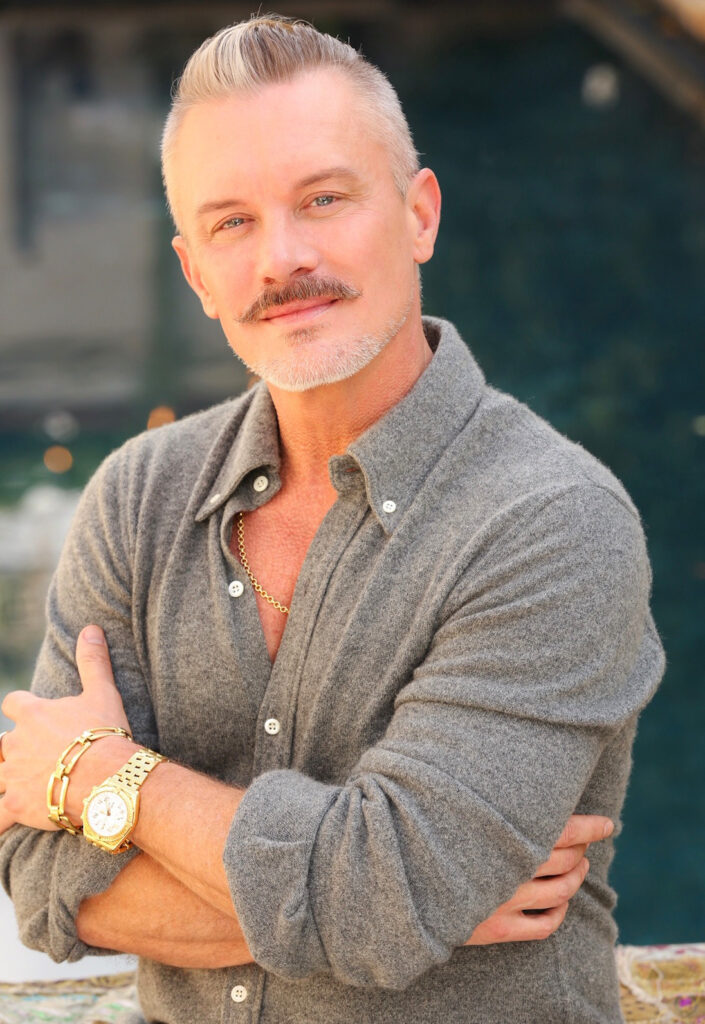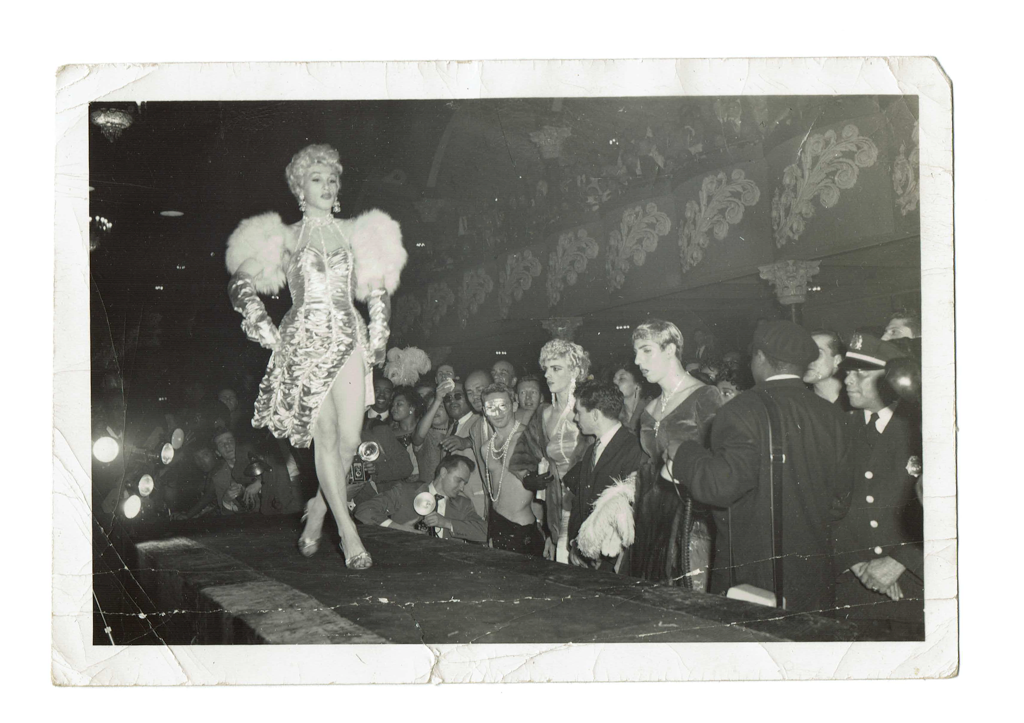Birth of modern drag documented in 1950s treasure trove of personal letters
P.S. Burn This Letter Please is the ground-breaking book based on the secret letters of 1950s New York City drag queens.
In 1950s New York, a group of drag pioneers found work in a small number of Lower East Side clubs. They occupied the margins of society, determined to live authentically, despite the attentions of the police. These girls were unstoppable, fearless and fabulous, but their very existence was deemed a criminal threat to society.
When a secret cache of their letters was discovered in 2014, these individuals were given a voice for the first time. The letters reveal personal triumphs and tragedies, and a fascinating world that has rarely been documented.
Expertly weaving social, political and cultural history, author Craig Olsen illuminates the lives and loves of our exceptional LGBTQ+ forebears in his book P.S. Burn This Letter Please, which is the textual companion to the documentary film of the same title. We caught up with Olsen to find out more.


How have the letters been authenticated and how did you become involved in the project as a book?
Craig Olsen: In 2014, I stumbled upon a remarkable treasure hidden within my late friend and Hollywood Super-Agent, Edward F. Limato’s personal belongings: a collection of over 200 letters. As I held those aged pages in my hands, an inexplicable connection surged through me, the letter writer’s words and stories were familiar to me as a drag artist myself.. Eager to unlock their secrets, I embarked on a journey, seeking guidance from archivists, historians, and even the original letter writers themselves. To my astonishment, my hunch was confirmed – these clandestinely saved letters penned by a group of queer young men, who moonlighted in drag, were not just ordinary correspondence; they were authentic historical documentation unveiling a hidden subculture within the LGBTQ community during the vibrant era of 1950s New York City. It dawned on me that while fragments of queer culture existed, they remained largely unexplored and obscured from mainstream knowledge. Much knowledge of queer life up until the 1990s was police records and death certificates. This revelation ignited a fervent mission within me – to share this invaluable information and celebrate them. I recognized the urgent need to reclaim and preserve the history of gay individuals, a narrative that had long been dismissed and deemed unworthy of safeguarding. Eventually on my journey, the cruel reality of the past resurfaced; Imagine the countless letters that had been reduced to ashes, out of sheer survival, by the individual or a family member out of fear or shame the possession of these letters could expose one’s true sexual orientation.
Driven by a sense of purpose, I delved deeper into this rich archive, connecting with experts, immersing myself in conversations that bestowed invaluable context and insight. With every encounter, I pieced together a more comprehensive understanding of the LGBTQ experience throughout this period in history. In embracing this cause, I aim to reshape the narrative of queer history, elevating its significance and illuminating its profound impact on society.
By disseminating this untold story, I aspire to foster a broader, more inclusive comprehension of our shared cultural heritage. I suppose this dedication springs from a deeply personal place, one that seeks to honor the struggles and triumphs of LGBTQ individuals who have shaped our world. Our collective history matters. Together, we can reclaim our past, ensuring that the letters that once smoldered in fear are now cherished as vital threads in the tapestry of human history. As cultural queer anthropologist Esther Newton once said, “This is our story, this is where we came from.” – and I couldn’t agree more.
The letters evoke a pre-Stonewall drag scene and LGBTQ community. What sense do you get from the letters about life then?
Craig Olsen: The letters transport the reader to a captivating era of pre-Stonewall drag culture within the LGBTQ community. In the bustling streets of 1950s New York City, a vibrant scene thrived, but it existed against a backdrop of racism, and homophobia. Marginalized gay and BIPOC communities faced relentless discrimination at local, state, and federal levels. Civil rights were nonexistent for these communities, and being gay was considered a criminal offense. A particularly archaic law targeted those who dared to defy societal norms by dressing in drag. Merely masquerading as anything other than one’s assigned gender was punishable by imprisonment.
Despite the looming dangers, a courageous few dared to live their lives unapologetically. The letter writers faced the constant threat of arrest and violence from both the local community and law enforcement. Within this tumultuous landscape, the Phil Black ‘FunMakers” Drag Balls emerged as a beacon of unity and defiance. These balls held in Harlem brought together black and white communities, an unprecedented convergence in history. The queens who graced these events spared no effort in creating awe-inspiring gowns, always striving for the epitome of glamour. Promoters were granted a single night each year when the antiquated law was temporarily lifted, allowing these extraordinary gatherings to take place. Queens from far and wide would flock to these balls, eagerly anticipating the experience they would soon partake in. Once the evening concluded, the attending queens wasted no time meticulously planning their gowns for the following year’s extravaganza.
These balls forged connections and fostered a sense of unity. Just imagine the sheer joy and vibrancy such gatherings would bring if they were still a largely celebrated part of our culture. The legacy of these Drag Balls serves as a testament to the resilience and creativity of those who defied societal constraints. They challenged the status quo and created spaces where marginalized individuals could express themselves freely. While we continue to navigate the complexities of our present society, it is important to remember the transformative power of events like the Drag Balls, where inclusivity, self-expression, and pure fun intertwined. I personally would like to see more of these events across the country and not just in the inner cities. Drag brings people together.
Going by the voices and personages writing the letters, who would you like to go back in time and hang out with or see perform?
Craig Olsen: If I had the ability to transport myself back in time, I would relish spending a single day with Daphne. Among all the writers, her letters provide such vivid glimpses into her life. She not only reveals her thoughts and emotions but also meticulously describes her attire and upcoming plans. Through her words, you gain a profound understanding of her longing for genuine love. It would be an absolute joy to walk in her shoes, even just for a day. However, Claudia’s story resonated with me deeply as well. Displaced by both an abusive family and a system that failed her, Claudia yearned desperately for a sense of belonging. My heart aches for her, and I can’t help but envision going back intime and comforting her with a warm embrace, assuring her that everything will eventually be okay. It’s a tough question to answer, for each writer possesses their own unique allure. They are all wonderfully complex, unabashedly human beings with their flaws, vulnerabilities, and desires. Just like you and me.
I would also like to add: Each of these letter writers possesses a distinct voice and style that immerses you in their personal journeys, almost as if you’re experiencing them in real time. I found myself captivated by the vernacular and language they used, which proved to be a fascinating exploration. Some of the slang and expressions were entirely new to me, while others have endured the test of time, bridging the decades with their colloquial charm.
Would you trade life now for a life back then?
Craig Olsen: I am someone who wholeheartedly embraces progress. While acknowledging that each generation before us faced its own set of challenges, I am grateful for the voice we have today. We have fought tirelessly over the past two decades to secure equal rights for all. We weathered the storm of the AIDS crisis and endured immense scrutiny, with religious hate groups and certain members of our government targeting marginalized communities, attempting to strip us of our basic human rights. It pains me to witness marginalized groups being used as pawns in a political game, manipulated by far-right evangelical Christians.
Yet, as a society, we stand strong, unwavering in our resolve. We are here, and we are not going anywhere. Unlike the pioneers who blazed trails before us, we possess voices that echo in numbers. We refuse to cower in fear or back down from these opposing forces. We have emerged from the shadows, no longer relegated to the cloak of night. Today, we live out loud, unapologetically embracing our identities. It is a privilege we must not take for granted.
We must remember that progress is not stagnant, but an ongoing journey. We have come a long way, but the fight is not yet over. Our voices, our unity, and our unwavering commitment to equality and justice will continue to shape a brighter future for generations to come. Together, we can push back against the forces that seek to divide and discriminate. We are the embodiment of resilience, and we must never forget the importance of our collective strength.
Is there one key letter or exchange in the book that profoundly moved you?
Craig Olsen: Most definitely! However, I would like the reader to find the letters and queens that speaks to them the most, with the hope they will see themselves in one or two of the queens, so I will reserve pointing out a particular letter or exchange because they are all so individual and I don’t want to lead the reader. What I can say is; In these letters, I discovered a mosaic of messy, self-effacing, and unapologetically passionate individuals. They are a testament to the diverse range of human experiences that transcend time and societal constraints. Their stories remind us that, beneath the surface, we all share common threads of longing, love, and the innate desire to be seen and understood.
Get the book, out now, here.






